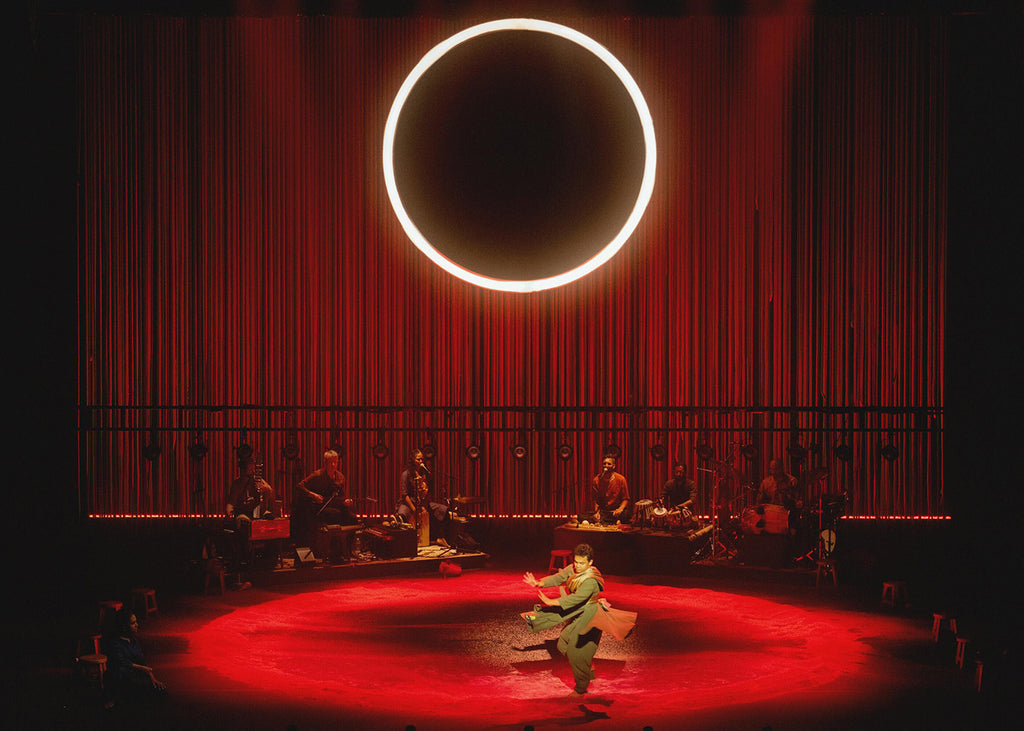This large-scale narrative is told in two distinct parts—Part One: Karma: The Life We Inherit and Part Two: Dharma: The Life We Choose. Each part is presented as a separate two and half-hour program, which I attended in a full-day marathon during the last weekend of June. Rife with plots for power and revenge, raging battles, games of dice, mistaken identities, moral struggle, and ultimate transcendence, the tales unnest like strands of wool gently pulled from a large mass and spun into yarn. Miriam Fernandes, as the narrator, is onstage throughout most of the production continuously spinning one story after another in an amazing feat of spoken expression.
The storytelling extravaganza uses spoken narrative, live music, a Sanskrit opera, physical theater, and various forms of Indian dance, blended into a coherent physical language by choreographer Brandy Leary. Lorenzo Savoini’s set design ranges from the baroque to minimalist and includes brass bowls of fire, a carpet of red gravel encircling the central space, a backdrop of snakes (hanging ropes), and large screens with evocative projections. The lighting design by Kevin Lamotte often saturates the stage with intense reds and golds amplifying the richness of the court, the blaze of fires, the impulse towards rage, vengeance, and transcendence.
The overarching theme is that violence begets violence. The story revolves around an inter-family conflict, as two warring sets of cousins—the Kauravas and the Pandavas—vie for power and control over the kingdom of Kurukshetra. Part One – Karma lays out the ancestral history that leads to the great war. The word karma means “action” and implies that every action, intentional or accidental, has far-reaching consequences. Hence the actors depict years of karmic actions—marriages, births, exiles, reunions, curses, and conflict. Wedding scenes pulse with boisterous Bhangra dancing replete with jumping and handclapping; Ellora Patnaik, skilled in the Odissi form, dancing as Queen Kunti dances the divine conceptions and births of her five sons—the Pandavas. Meanwhile, Queen Gandhari dramatizes her own unique two-year pregnancy, labor, and delivery of 100 sons—the Kauravas. Her first-born Duryodhana, played by Darren Kuppan, emerges and somersaults to life with street dance and martial arts moves reflecting his aggressive nature.











comments